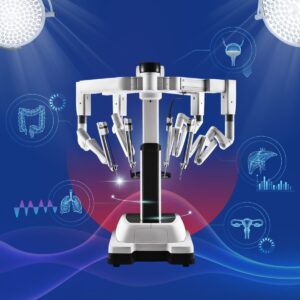Visual acuity is different from person to person. There are many ways to help people with eyesight problems – such as nearsightedness, farsightedness, or astigmatism – to regain their clear vision. But an effective method that increases a chance of restoring your eyesight as a super-vision is LASIK, especially the ReLEx (Refractive Lenticule Extraction) Smile which is a bladeless non-invasive LASIK procedure with only a small incision that doesn’t disturb your cornea. Another method to correct your vision without having to worry about dry eye disease or eye infection, and doesn’t disturb the cornea either, is ICL or Implantable Collamer Lens. Both treatments help sharpen your vision for every angle.
20/20 Vision with Super-Vision
Visual acuity (VA) measurement requires an internationally accepted standardized method. The most popular one is the Snellen Chart, which has black numbers on a white background to indicate your visual acuity. The top row has the largest numbers, and the size decreases for each successive lower line of the chart. There are 7 rows within a foot on the chart indicating the vision such as 20/200, 20/100, 20/70, 20/50, 20/40, 20/30, and 20/20. The front number, which remains constant at 20, indicates the distance of the chart (i.e., 20 feet or 6 meters away). The back number indicates the normal visual acuity. A person taking the test covers one eye and uses the other eye to read from the top row to bottom without eyeglasses or contact lenses. For example, if your vision is 20/200, it means you have to be 20 feet from the chart to see it whereas people with normal eyesight can see the same chart from 200 feet away.
The 20/20 is the normal visual acuity. Those with nearsightedness, farsightedness, or astigmatism will have worse eyesight than this. The ICL procedure helps improve your vision to 20/20 level or better, such as 20/15 – which means a person with normal vision can see an object at 15 feet but a person with super-vision can see it from 20 feet away.
LASIK & ICL – Vision in HD Level
For those with eyesight problems, regaining clear vision helps improve the quality of life. Therefore, LASIK and ICL implants not only increase the chances of having normal vision, but also raise the possibility of having a super-vision. Information from the International Journal of Ophthalmology 2016 about the result of Refractive Lenticule Extraction Smile (ReLEx) shows that LASIK & ICL work very well for those with nearsightedness and astigmatism even though they may experience some dry eyes condition after the surgery.
For information about ICL, please click https://www.bangkokhospital.com/th/disease-treatment/implantable-collamer-lens. It shows a 2016 Biomedical Research that was reported in Allied Academies – a website that publicizes research works around the world – on the topic of ICL and problems with severe myopia (nearsightedness). The report assesses visual acuity after ICL procedures, and indicates that the patients have exhibited significant improvements. Six months after ICL treatment, these patients’ visual acuity as well as their wavefront abberrations measurements continue to show positive progress. Thus, these implanted lenses have opened up opportunities for more activities and changed their lives. (REF: https://www.alliedacademies.org/articles/implantable-collamer-lens-for-high-myopia-assessment-of-visual-quality-after-implantation.html)
In any case, if you notice problems with your eyesight, you should consult an ophthalmologist at a hospital with proper equipment and technology to diagnose and asses your vision, and to provide appropriate treatment that yields a satisfactory result. So, you can have a clear eyesight once more and change the way you see the same old world under a better vision.












